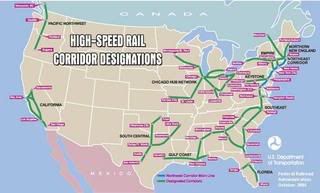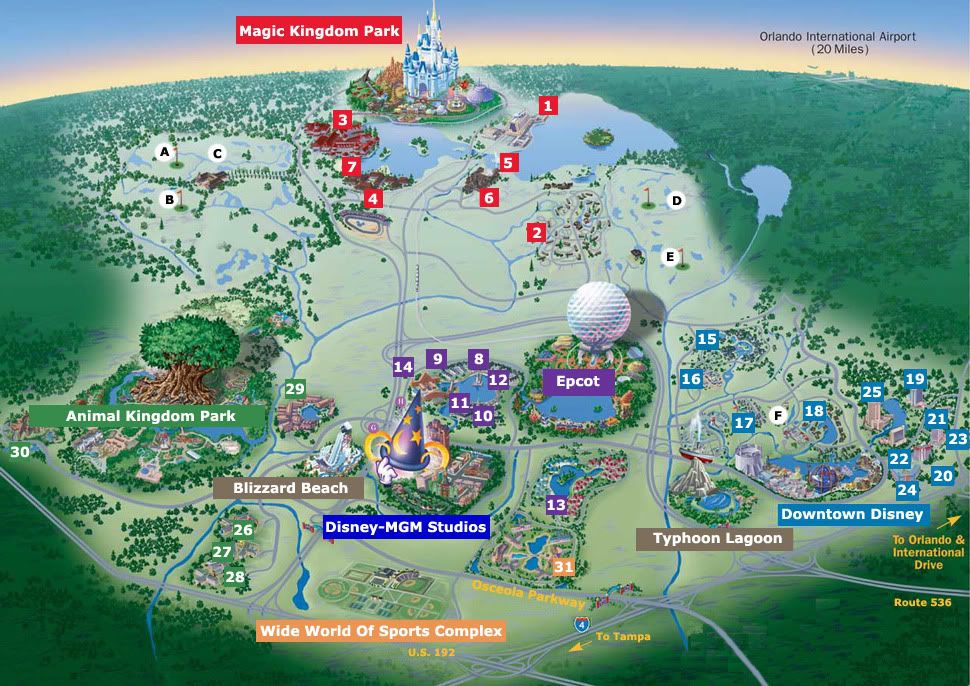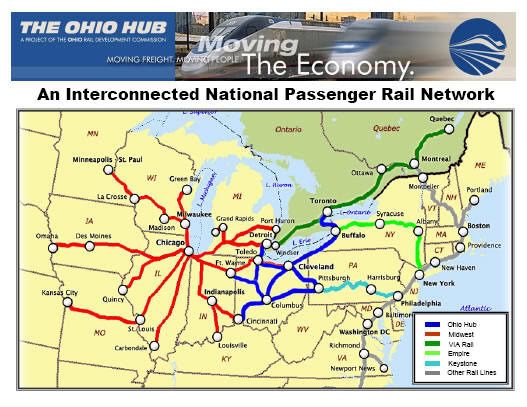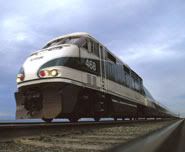 Huh, seems me that whatever the state of my various concerns, the agenda of the Sunday Train has been taken over by the White House ... funny how announcing the recipients of a total of $8b will do that.
Huh, seems me that whatever the state of my various concerns, the agenda of the Sunday Train has been taken over by the White House ... funny how announcing the recipients of a total of $8b will do that.The Transport Politic (aka Yonah Freeman and the TTP commentariat) has a very complete rundown. The allotments over $200m are:
- California, $2,344m
- Florida: $1,250m
- Illinois: $1,236m
- Wisconsin: $822m
- Washington: $590m
- North Carolina: $545m
- Ohio: $400m
So, what's the money for?
So, what's the money for?
I'll start with the big ticket items.
 California, $2,344m. This includes $1,850m for the California HSR Stage 1 from San Francisco to Anaheim via San Jose, Fresno, Bakersfield, and the LA Basin. This is, in essence, enough to prime the pump for the California project.
California, $2,344m. This includes $1,850m for the California HSR Stage 1 from San Francisco to Anaheim via San Jose, Fresno, Bakersfield, and the LA Basin. This is, in essence, enough to prime the pump for the California project.California has the advantage of $9b in bonding authority already passed in November 2008, but that bonding authority has strings attached. One of those string is that for any given segment, all funding has to be in place before bonds can be sold, bonds cannot fund more than half the cost of a given segment, and to avoid monkey business in the definition of "segment", it has to have a vetted plan for running services without state operating subsidies.
This ARRA funding will allow the California HSR authority to work through 2010 and its projected start of the segment design and build process in 2011 without having to sell bonds up front. Then if an application for additional Federal funds requires matching funds, it will be possible to bring one or more of the defined segments in line for receiving state bond support, which will provide the matching funds.
Obviously, how fast those funds flow will determine how close the CAHSRA can stay to its project timeline ... but with the ARRA funding to prime the pump, California is well placed to proceed with the project at whatever pace that funding flows permit.
And the flip side of the ARRA announcement is a substantial group of states with a stake in having enough HSR funding so that they are not forced to go toe-to-toe with California's substantial application advantages. Any "transparent process", which are codewords for cost-benefit analysis based decisions, will give heavy weight to California for Express HSR. Just as the Northeast Corridor has a close to ideal population distribution for conventional rail, and the Great Lakes / Eastern Midwest a close to an ideal population distribution for 110mph/125mph Emerging/Regional HSR, California has close to an ideal population distribution for Express HSR.
In addition to the Stage 1 corridor funding, the ARRA funding includes $400m for building the shell of a bus terminal into the foundations of the Transbay Terminal bus station in San Francisco. This is a project that is reputedly "ready to go", although of course the actual design of the TBT train box leaves quite a bit to be desired. Never one to quit working before the whistle, I am hoping that the availability of $400m can be used to persuade the Transbay Joint Power Authority to build a less heavily bottlenecked design for trains entering and leaving this undergound train station.
Finally, while Stage 1 does not go to Vegas (despite what the Replicants were saying this time last year) ... it does go to Disneyland. Which sets the stage for the next allocation.
 Florida: $1,250m. This is entirely for Express HSR track from Tampa to Orlando. This is a line that has been criticized for not connecting the two downtowns of the two cities. On the other hand, it does go to Disneyworld, and as an on-again, off-again project that kept getting squashed by lack of local funding, the Florida State Legislature was led to believe that their hopes of HSR funding required a commitment to support complementary local rail service. Support for SunRail passed, and so Florida got their Disneyworld train.
Florida: $1,250m. This is entirely for Express HSR track from Tampa to Orlando. This is a line that has been criticized for not connecting the two downtowns of the two cities. On the other hand, it does go to Disneyworld, and as an on-again, off-again project that kept getting squashed by lack of local funding, the Florida State Legislature was led to believe that their hopes of HSR funding required a commitment to support complementary local rail service. Support for SunRail passed, and so Florida got their Disneyworld train.If there is ongoing federal funding available, I expect that sooner or later Florida will bite the bullet and sort out an extension of the service - even if not an extension of the corridor - to allow downtown to downtown service. After all, in France, one of the early pioneers in High Speed Rail, its common for the Express HSR services to only run on Express HSR corridors between major metropolitan areas, and to run into and through major metro areas on express electric urban lines.
 Illinois: $1,236m. The main project here is $1,102m to upgrade parts of the Chicago / St. Louis corridor to 110mph service, cutting end-to-end travel time to four hours, and bringing substantial new populations along the corridor within three hours or less of either Chicago or St. Louis or both. Further improvement of this corridor on the same basis can bring the end-to-end time down to three hours.
Illinois: $1,236m. The main project here is $1,102m to upgrade parts of the Chicago / St. Louis corridor to 110mph service, cutting end-to-end travel time to four hours, and bringing substantial new populations along the corridor within three hours or less of either Chicago or St. Louis or both. Further improvement of this corridor on the same basis can bring the end-to-end time down to three hours.The second main project is $133m for line and station improvements between Chicago and Michigan, including two suburban and one downtown station for Detroit. This is a line that, like the Chicago / St. Louis, has already has a series of smaller incremental improvements.
Wisconsin: $822m. The bulk of this is $810m to establish a Milwaukee-Madison corridor service. This will extend the already well patronized successful Chicago / Milwaukee corridor, and indeed further build patronage on that corridor, since Madison / Chicago is a substantial transport market in its own right along this corridor.
 Washington: $590m. This is mostly for bypass tracks for the Cascade Corridor between Oregon and Washington, with some services continuing to Vancouver. I believe there is also some provision for new rolling stock to support additional Vancouver services.
Washington: $590m. This is mostly for bypass tracks for the Cascade Corridor between Oregon and Washington, with some services continuing to Vancouver. I believe there is also some provision for new rolling stock to support additional Vancouver services.North Carolina: $545m. The bulk of this is $520m to bring the Raleigh/Charlotte corridor up to 90mph, as a first step to eventually bringing it up to 110mph as part of the Southeast HSR Corridor.
Ohio: $400m. This is all dedicated to establishing the conventional rail starter service for the Triple C route from Cleveland to Columbus and Cincinnati to Columbus. This was a route abandoned in 1971 when Penn Central went bust, and when Columbus was well under half a million in population. However, with the growth of Columbus in the decades since, Columbus is now the second most populous metro area and the corridor the most densely populated corridor in the country without regular rail service.
 In terms of HSR, establishing this service is a starter on establishing the 110mph version of the Triple C, which with two hour services to Columbus from either end is when the corridor is projected to be capable of generating a substantial operating surplus. It may take a series of upgrades, to get there, but each upgrade will cut trip speeds and improve patronage on the corridor, trimming the required subsidy until it finally goes away.
In terms of HSR, establishing this service is a starter on establishing the 110mph version of the Triple C, which with two hour services to Columbus from either end is when the corridor is projected to be capable of generating a substantial operating surplus. It may take a series of upgrades, to get there, but each upgrade will cut trip speeds and improve patronage on the corridor, trimming the required subsidy until it finally goes away.Oh, and clever politics too
I've already noted the political intelligence of giving California enough to prime their pump. California Senators and Congressmen will, of course, be pushing for enough further HSR funding to assure that California's HSR system can be constructed more or less on scheduled. And of course, rivals can either try to fight that big House caucus ... or work out a way to ensure there is enough to go around. The politics leans toward the "enough to go around" outcome.
For Florida, people from all over the country go to Disneyworld. In not too long a time from now, many of them will be catching the train from an airport station to Disneyworld, and some of them using the HSR train again for one or another daytrip. This addresses the "if only you had ever been to Europe/Japan and experienced this thing ..." problem.
And of course, Florida is a famous Presidential swing state. Work on the corridor will be progressing before election day in 2012.
Illinois is not a famous Presidential swing state, but after California is one of the prime examples of states that have invested both capital and operating subsidies into improving Amtrak corridor services in its state, and even if the President and Secretary of Transport were not a Democrat and Republican, respectively, from Illinois, it would be wise politics to reward that behavior with the flagship Emerging HSR corridor. Of course, on the SubsidyScope numbers, even at conventional rail speed, its also the leading Great Lakes / Midwestern regional corridor in operating cost ratio, so its also the safest bet in terms of generating a comfortable operating surplus once raised to 110mph.
Washington (and Oregon, but the bulk of the corridor is in Washington, and that's where the highest priority bottlenecks lie) may not lean as strongly Democratic in Presidential politics as Illinois, but is also an example of rewarding those states that have invested into corridor improvements, as in inducement to additional states to follow the same course.
North Carolina is an example of a state that we didn't expect to be a swing state in Presidential politics, but then in 2008, it swung. And North Carolina is right on the boundary line between states that have been making genuine investments in improved rail service, and the states to its immediate south and west that have been paying lip service at most.
And of course, Ohio is a Presidential swing state in the Florida league. Further, the Ohio Triple-C will be in operation before election day, 2012.
In terms of the politics of rewarding states for supporting rail, Ohio is like Florida in the first half of "new friends are silver, old friends are gold" ... after a very tight fight in the Ohio state legislature, the operating subsidies required by the conventional speed Triple-C service were passed by the Republican State Senate. That was when before Strickland's approval rating was battered by the recession, and unless that subsidy offer was taken up by the DoT, there was every chance that it would not be repeated.
On the other hand, once the service is up and running, the call to apply for federal funds to speed segments of the corridor up to 110mph will be much harder to resist than it was to fight against the idea of starting the service up in the first place. So there is every reason to hope for 110mph service to be in place in Ohio sometime before election day, 2016.
And now, the headliners ...
Midnight Oil: The Power and the Passion


No comments:
Post a Comment